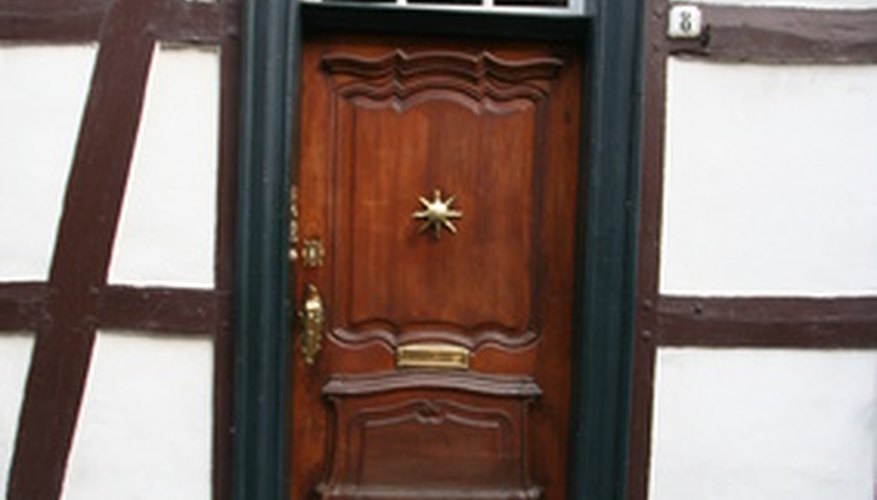Skirting board is also known as decorative baseboard or floor moulding. It adds an extra feature to a room and is often painted in a different colour from the walls or wallpaper. In older houses, the skirting board is often quite decorative in itself, though the modern version tends to consist of fairly plain board. It is better to match the style of skirting to the type of house. Old houses often have uneven walls and this presents more of a challenge when putting up skirting board. However, by using the correct method of attachment and decorator's caulk, it is not an insurmountable one.
- Skirting board is also known as decorative baseboard or floor moulding.
- It is better to match the style of skirting to the type of house.
Measure the lengths of the walls. Cut the skirting board, allowing an extra 20 per cent margin for error. Use a mitre block, or ideally a power saw, with the blade set at 45 degrees to cut the corners. The corners nearest to the door can be cut at a square angle. Ensure that the boards cut at 45-degree angles are matching correctly.
Stack the boards in the room for 48 hours before using, so that the timber can acclimatise to the room. Timber can expand as it absorbs moisture from the atmosphere. This also helps the boards to mould to the walls, even if they are uneven. Prime the boards if you are going to paint them, or sand, if you are going to varnish.
- Stack the boards in the room for 48 hours before using, so that the timber can acclimatise to the room.
- This also helps the boards to mould to the walls, even if they are uneven.
Drill small holes at 8-inch intervals in the wall, at half the depth of the skirting board. Put the anchors in the holes to attach the screws. Mark 8-inch points out on the skirting board to match the walls. Attach the boards to the walls, using strong fixing screws. It is possible to use an adhesive on even walls, but for uneven walls it is best to use anchors and strong fixing screws. Fill in any obvious gaps between the skirting and the walls with decorators' caulk before painting or sanding.
TIP
A golden rule is to "measure twice and cut once." It is probably better to paint rather than sand the skirting board, where the walls are not perfectly straight.
